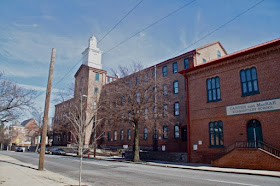 |
| This was Mill #2 of the Conestoga Steam Cotton Mill Complex. Today it houses the Water Street Ministries for the homeless. |
 |
| Mill #1 which currently is Lancaster School District's Carter and MacRae Elementary School. It stands on the east side of Prince Street. |
 |
| The building on the left was Mill #3 and is currently the Administrative Offices of the School District of Lancaster. |
 |
| Just had to take a photo of Farnum Field. In the distance you can see the three Mills. I have played on this field as well as coached baseball on this field. Many happy memories! |
 |
| The cupola of Mill #3 is seen as it seems aglow in the blue sky behind it. Beautiful rooflines add to the scene. |
Please remove this story from your website. It has been grossly plagiarized from my website, for which I did extensive research. Your publication of it has caused great difficulty for me.
ReplyDeleteI too did research at the Lancaster Historical Society as well as the Lancaster County Library. I spent time at the Water Street Ministries and the School Dist. of Lancaster talking with them as well. I do this for a hobby and I don't want to cause any problems for you and will remove my story, but not until I can see why you claim I used your manuscript for my story. Please give me a link to it so I may view your work. All of the photographs on my story are my own photographs. Larry
ReplyDeleteWhat year did the school district offices and carter McRae open to the public ?
ReplyDelete